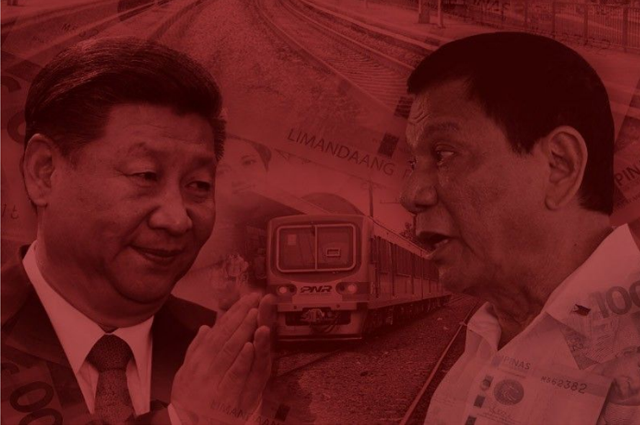Departing from the Chorus on Chinese Loans

Screengrab from Philstar.com.
SINCE THE first year of the Duterte administration, the news has faithfully reported every glowing claim made by the president about the bounty to expect from China’s pledged loans and grants for the government’s Build, Build, Build (BBB) infrastructure program.
 More recently, Duterte emphasized China’s crucial role in the success of the government’s widespread infrastructure program during a speech before he departed for China for the Boao Forum for Asia (“Duterte: China an ‘important ingredient’ in ‘Build, Build, Build’ program”).
More recently, Duterte emphasized China’s crucial role in the success of the government’s widespread infrastructure program during a speech before he departed for China for the Boao Forum for Asia (“Duterte: China an ‘important ingredient’ in ‘Build, Build, Build’ program”).
Duterte’s BBB program requires a whopping PHP8.44 trillion in six years. Clearly, this golden age of infrastructure promised by this administration will make the Philippines a deeply indebted nation.
None of the reports have examined how the country will pay back these loans. Others have warned that such dependence on loans can cause problems for the country.
In a May 7 report by GMA News TV’s State of the Nation with Jessica Soho, the Asian Development Bank said their members should avoid falling into a debt trap and must carefully assess their ability to pay loans before agreeing to projects that fit into China’s Belt and Road Initiative.
“If countries borrow too much for certain infrastructure projects without looking seriously at the viability and feasibility, there will be trouble in repayment,” ADB president Takehiko Nakao said in a briefing held during the 51st ADB Annual Meeting earlier this month.
CMFR cheers The Philippine Star and Philstar.com for publishing a two-part special report that weighed the pros and cons of Chinese loans.
The report noted the government’s expressed preference for loans drawn through the Chinese Official Development Assistance (ODA); pointing out however that Japan has remained the top foreign investor for the first quarter of 2018 (“Special Report: Should we be worried about Chinese loans for infrastructure buildup? (Part 1)“).
It cited the explanation given by Alvin Ang, an economist and director of the Ateneo de Manila Center for Economic Research, who said that the government is in a rush to overhaul its worn out and neglected infrastructure and Chinese loans can be secured without the lengthy public consultation and bidding processes, making these more attractive than Japanese loans. But the report also included the point made by senior representative of Japan International Cooperation Agency (JICA) Tetsuya Yamada who said that the tedious process of procuring ODAs from Japan assures full accountability and transparency for both Japanese and Philippine taxpayers (“Special Report: Should we be worried about Chinese loans for infrastructure buildup? (Part 2)“).
JICA, the ODA arm of the Japanese government, is known for providing loans with interest rates that are below commercial market rates and are based on the income classification and the economic situation of the borrowing countries. Yamada also said that the Japanese government gives softer loans with lower interest rates and longer payment terms to countries with higher risk and lower income levels.
Red Flags
The report observed ongoing concerns about the higher interest rates of Chinese loans which carry interest rates of two to three percent, higher than Japan’s 0.1 to 1.5 percent.
Should the Philippines fail to pay these loans on time, a collateral may be required.
As an example, the article cited Sri Lanka which was forced to hand over its Port Hambantota on a 99-year lease to Chinese state firms when it could not afford to pay its debt. China’s occupation of reefs in the West PH Sea adds more red flags to Chinese loans.
Missing Points
CMFR observes that news accounts favoring Chinese investments and loans have exclusively government sources. As government officials have joined the official chorus to hype the benefits of the government’s deals with China, they do not give the audience the entire picture of the situation. Media reporting must go beyond these official sources to assess the wisdom of Duterte’s dependence on China’s cash, which obviously comes tied with many strings. The blind trust for China espoused by President Duterte should be met with healthy journalistic skepticism. There are enough voices with experience and expertise to help the public understand what is at stake, but only if media is willing to do its job.
Leave a Reply